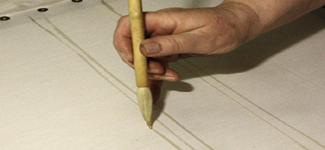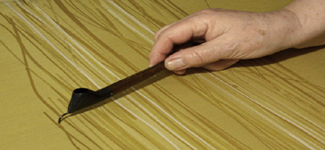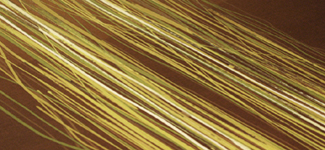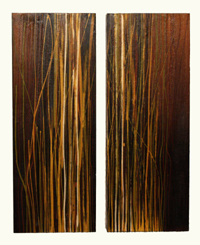
 |
 |
BATIK is a resist technique and probably the oldest method used for the decoration of fabric. In Javanese the word Batik means to draw/write and it refers to the process of melted wax being applied as a resist before the fabric is dipped into a dye liquid. In English it is also called wax-resist, in Japanese roketsu-zome or rō-zome and in China it is làrăn. Worldwide the process is best known by its Javanese name batik. First we draw or paint with hot liquid wax on white fabric. When dye is applied the result is a white design on a coloured background, because of the water-repellent property of the wax. We continue to construct the batik in the same way by applying wax and dye until all the gradations wanted are obtained. Each new colour layer will be mixed with the previous one. |
 |
|
 |
|
 |